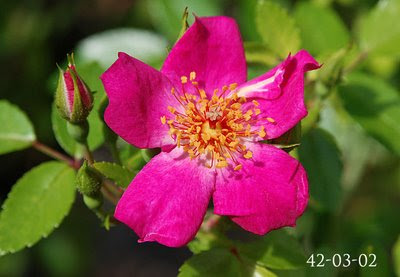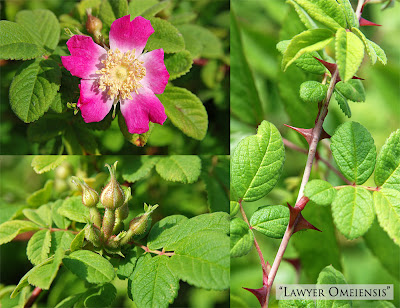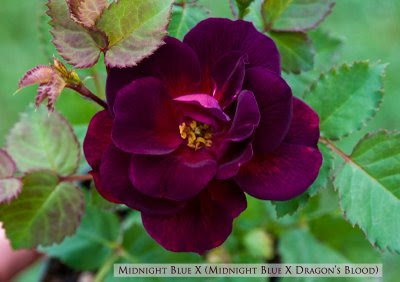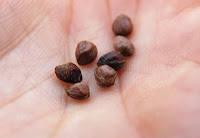 42-03-02 = (R. wichurana X 'Floradora') X (R. wichurana X 'Floradora')
42-03-02 = (R. wichurana X 'Floradora') X (R. wichurana X 'Floradora')As the years pass, you discover seedlings that grab your attention for one reason or another. Perhaps one stands out as very different from its siblings, or one might have an architecture feature you like, or superior disease resistance. While it might not be immediately apparent what purpose such a seedling might serve, it is wise to hang on to it and culture it and wait for its purpose to be revealed. I know that sounds a bit too mystical to be appropriate for something as systematic and planned as rose hybridizing, but the concept has meaning.
Take 42-03-02 illustrated here, for example. It is a selfing of the Moore breeder 0-47-19. It bears a striking resemblance to the Moore Hybrid Wichurana except that it has deeper coloring and is a 2.5 foot rounded shrub, always in flower. As its parent is a known diploid, I am assuming this is also and so I now use it in breeding specifically to further diploid breeding lines. It accepts a wide range of pollens and makes seed with about 50% viability in most cases. Testing the limits of its ability this year, I put some strikingly dissimilar pollens on it, including a 'Schneezwerg' F2 seedling and 'Scabrosa'. I have also used my R. foliolosa on it, and all of these pollens have resulted in healthy, fat hips.
My recommendation to breeders is that when a seedling grabs your attention for some reason, pay attention. It might prove to be a stepping stone at some point down the line, It might not tell you what its purpose is today, but it might turn out to be meaningful in a few years time and you'll be glad you kept it.



















